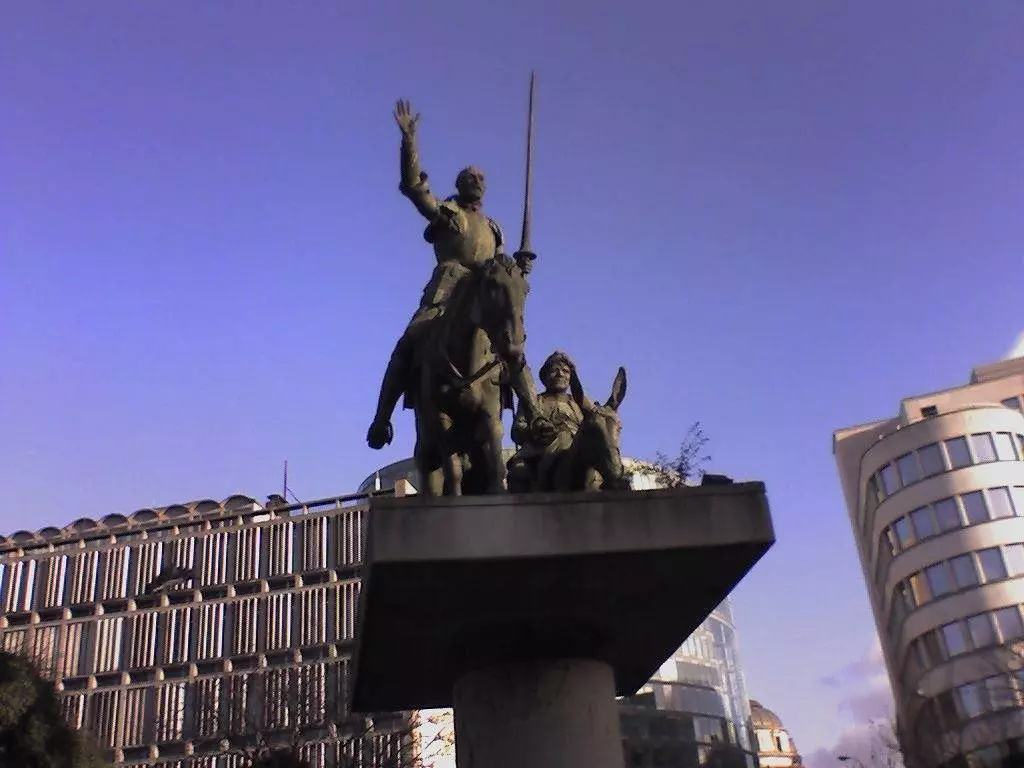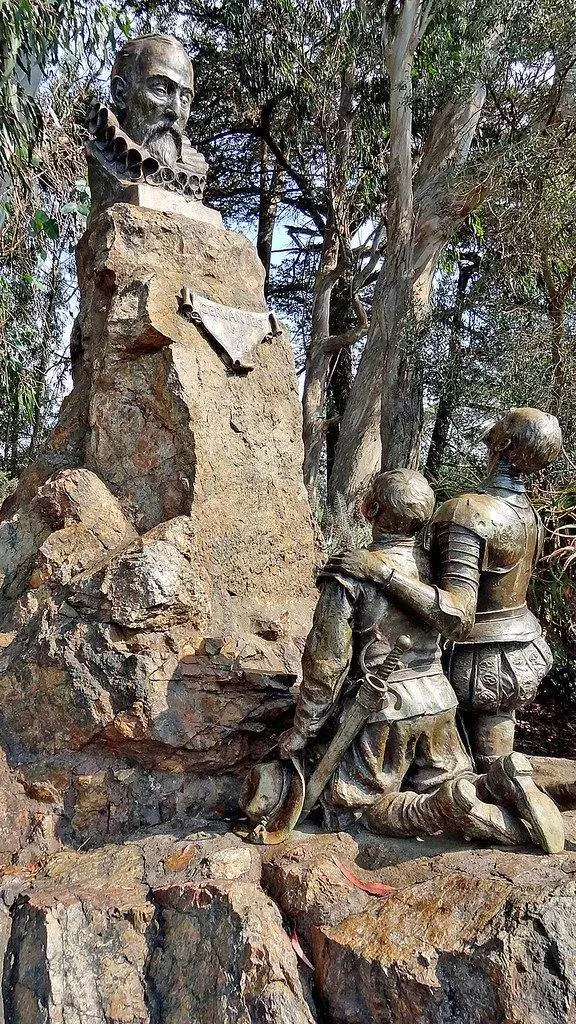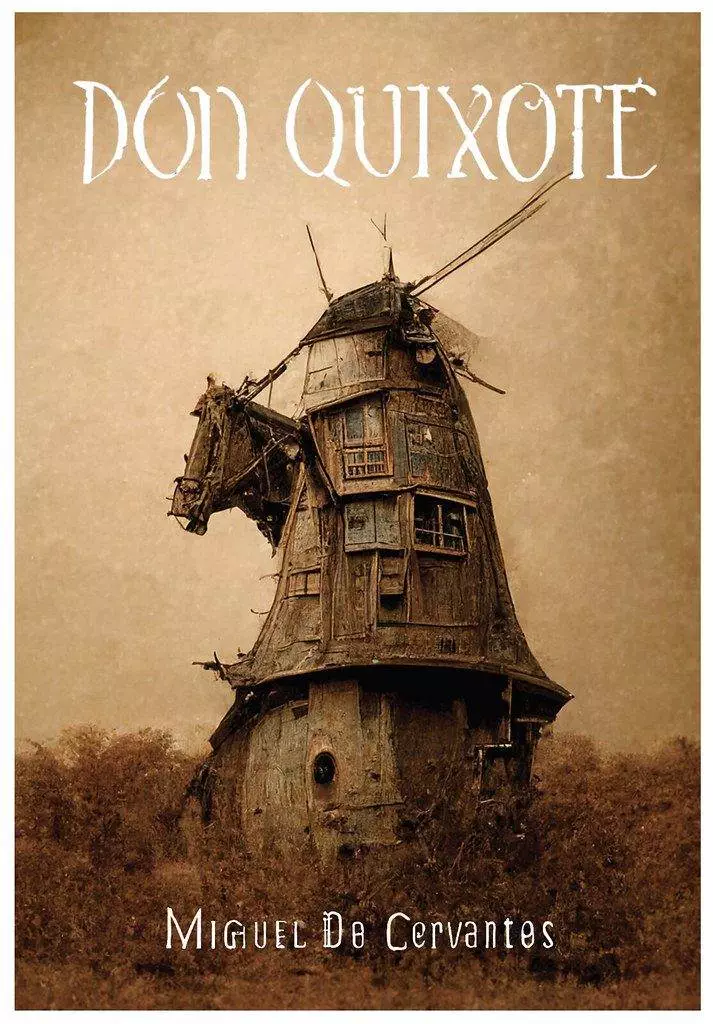Published in two parts, in 1605 and 1615, Don Quixote by Spanish author Miguel de Cervantes is considered one of the greatest and most influential works of literature ever written. This epic satirical novel tells the tale of Alonso Quixano, an enthusiastic reader who becomes obsessed with books on chivalry and knighthood.
Table of Contents
He takes on the persona of Don Quixote, a brave knight errant, and sets out on comic adventures to revive chivalry, enact justice, and find his imagined beautiful love, Dulcinea. Accompanied by his loyal squire Sancho Panza, Don Quixote’s adventures result in a series of hilarious episodes as he mistakes ordinary things for extraordinary signs and enemies.
Despite being delusional, Don Quixote’s idealism and courage in relentlessly pursuing his dreams makes him an endearing character. Don Quixote has had a profound influence across the literary world and beyond for centuries.
Themes and Style
Some of the key themes and ideas explored in the novel include:
- The conflict between illusion and reality and the subjective nature of madness
- The debate between idealism and pragmatism
- The search for meaning, purpose and virtue in life
- A sweeping satire on chivalry, the Church, societal values and literary forms
- The relationship between art and life, fact and fiction
- The divide between classes and education levels
Cervantes pioneered innovative literary techniques like realism, self-referential metafiction, unreliable narrator and intertextuality in Don Quixote that became hallmarks of the modern novel. The book is presented playfully through multiple internal narrators and perspectives. The tone alternates from serious to ironic to absurd.
Cervantes makes the characters vibrant and multidimensional while skillfully blending commentary with comedy. The language moves from formal to colloquial based on the characters. Through exaggeration, irony and parody, many of society’s absurdities are mocked. Overall, the novel masterfully balances entertainment and meaning.
Historical Context
Don Quixote was originally written and published in Spanish in two parts, with Part 1 coming out in 1605 and Part 2 following in 1615. It was written during the Spanish Golden Age in the early 17th century when Spain was at the peak of its power and cultural influence.
Some key historical events and societal factors relevant to the novel include:
- Aggressive expansion of the Spanish Empire under the Habsburg dynasty
- Dominance of the Catholic Church and the Inquisition
- Growth of cities and the middle class
- Rising importance of education and intellectual pursuits
- Popularity of chivalric romances as a literary genre
- Economic inflation and growing poverty outside cities
- Repression of free speech and critical commentary
By satirizing outdated chivalric notions at a time of imperial power, religious control, and social upheavals, Cervantes criticizes Spain’s institutions indirectly. The novel proves that the pen can be mightier than the sword.
Characters
Don Quixote – A middle-aged gentleman turned knight errant who acts on his ideals of justice, virtue, and courtly love. He sees life as it should be rather than how it is. His coming to terms with reality speaks to the human experience.

Sancho Panza – Don Quixote’s round, earthy and illiterate squire who represents pragmatism and realism. Despite his selfishness and simplemindedness, he is loyal and kindhearted. His interactions with Don Quixote are a highlight.
Dulcinea – An imaginary perfect woman and source of inspiration for Don Quixote based on his real life crush Aldonza Lorenzo. She represents the mad knight’s romantic idealism and courtly love notions.
Sansón Carrasco – A university educated man who masquerades as a knight to make Don Quixote return home to La Mancha. He serves as a voice of rationality.
The Priest and the Barber – Friends of Don Quixote who get caught up in his adventures and try to bring him home safely. They represent practical good sense and society.
Innkeeper – Mistaken by Don Quixote as a castle lord, he plays along with the fantasy to avoid conflict. Represents how society humors madness.
Read This Too: My Last Duchess: Poem Analysis | Robert Browning
Influence and Legacy
As one of the most important and popular literary works in history, Don Quixote has exerted vast influence over the centuries:
- It is considered the first modern novel and pioneered realism, metafiction, unreliable narrator and other literary innovations that became hallmarks of fiction.
- It is regarded as the greatest literary work in the Spanish language.
- It is the most translated book in the world after the Bible with over 400 English translations.
- Many famous authors across the world were influenced by Cervantes’ groundbreaking narrative techniques including Dickens, Melville, Faulkner, Kafka, Woolf, Borges etc.
- Don Quixote inspired countless other creative works across literature, art, theatre, opera, ballet, film, television etc.
- Many idioms in English language like “tilting at windmills” originate from the novel. It expanded the Spanish lexicon as well.
- Its universal themes and insightful commentary on perspective, idealism, madness, societal dynamics and the human condition remain profoundly resonant centuries later.
- Widely considered the first modern novel, it signified the shift from verse/poetry to analytical prose fiction as the mainstream literary form.
- It is admired for its literary brilliance and remains a cultural icon, representing world literature. Don Quixote and Sancho Panza are regarded as two of fiction’s greatest characters.
Why Read Don Quixote
There are many reasons why Don Quixote deserves its classic status and why it is worth reading today:
- It pioneered modern fiction and is crucial to understand the evolution of literature.
- The innovative narrative techniques like layered unreliable narrators, metafiction make it a technical masterpiece.
- It transports readers into a vivid, dreamlike world of adventure and ideals.
- The quirky characters, especially Don Quixote and Sancho Panza, are unforgettable.
- It combines entertainment with meaningful themes through satire and witty social commentary.
- There is brilliant characterization despite exaggerated personalities.

- Cervantes’ prose style and language feel remarkably fresh and modern.
- It provides a fascinating window into 17th century Spanish society and culture.
- Its themes related to perspective, meaning, madness, idealism, humanity are universal.
- It remains hilarious, poignant, imaginative and thought-provoking even today.
Key Passages
Some interesting and meaningful quotations from Don Quixote:
- “Finally, from so little sleeping and so much reading, his brain dried up and he went completely out of his mind.”
- “The truth may be stretched thin, but it never breaks, and it always surfaces above lies, as oil floats on water.”
- “Therein, perhaps, lies the power of books, that, seen merely as objects, they can change people’s lives.”
- “Take my advice and live for a long, long time. Because the maddest thing a man can do in this life is to let himself die.”
- “Anyone who denies you entrance or passage, treat him as an enemy.”
- “I know who I am and who I may be, if I choose.”
- “There are only two families in the world, my friend, the Haves and Have-Nots.”
Read This Too: Beyond Absalom: William Faulkner for UGC NET 2024
Conclusion
A novel centuries ahead of its time, Don Quixote is a masterpiece that brought satire, realism, characterization and other elements together in ways that make it feel remarkably fresh and experimental even today. Its lovable duo of Don Quixote and Sancho Panza along with its insightful commentary on humanity and society make it an unforgettable classic. No wonder it is considered not just the greatest Spanish novel but one of the finest literary works ever created across languages and cultures.


